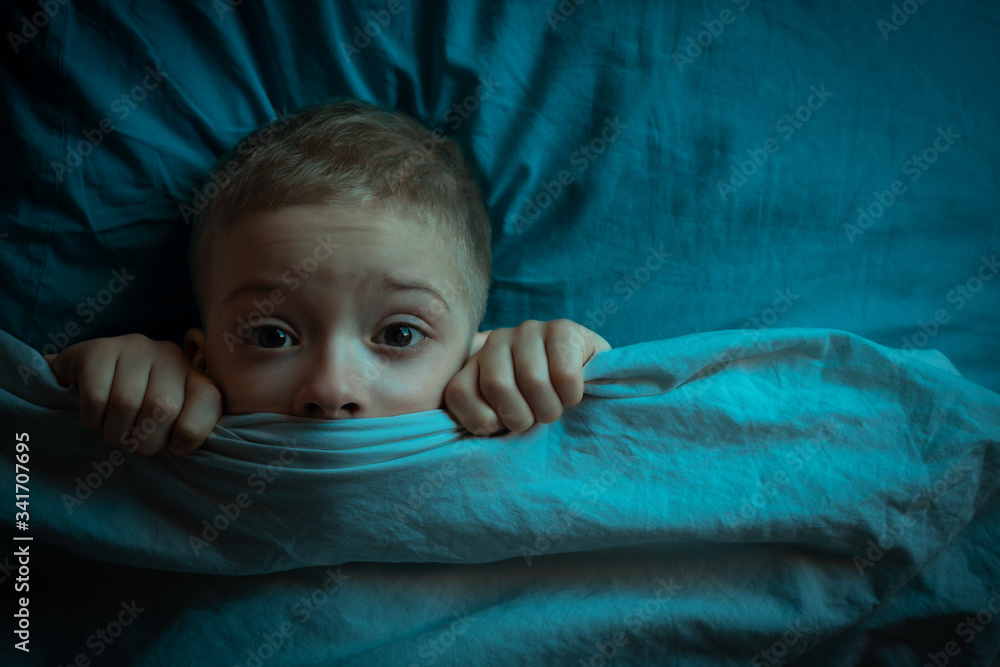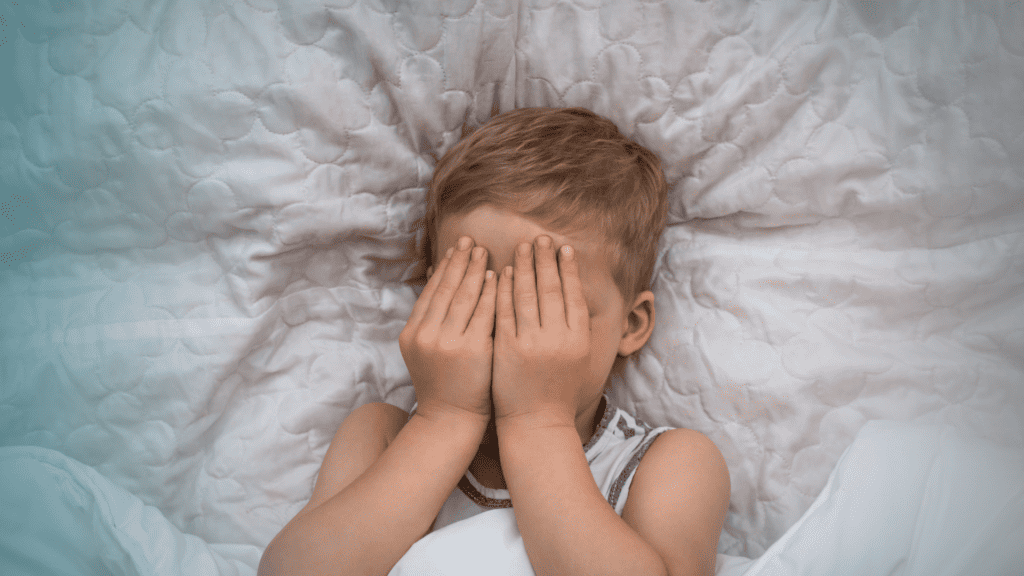Have you ever jolted awake in the dead of night, heart pounding, a cold sweat clinging to your skin, the lingering tendrils of a terrifying dream still clinging to your mind? The unsettling world of nightmares is far more prevalent and impactful than many realize, especially when it comes to children.
Nightmares, those vivid and often disturbing dream experiences, are a common part of childhood, but their impact can range from a fleeting moment of fear to a source of significant distress and anxiety. Understanding the nature of nightmares, their potential causes, and effective strategies for managing them is crucial for parents and caregivers alike. As many as 75 percent of children report experiencing at least one nightmare, a statistic that underscores the widespread nature of these nocturnal disturbances. A 2016 study focusing on kindergarteners even suggests that nightmares in this age group occur more frequently and are perceived as more distressing than previously thought. While an occasional bad dream might be a minor blip on a child's "nocturnal radar," recurring nightmares or those that trigger sleep anxiety can seriously disrupt their sleep patterns and overall well-being.
While the realm of childhood nightmares can seem daunting, the good news is that there are many effective strategies that parents can employ to help their children navigate these unsettling experiences. These strategies range from creating a soothing bedtime routine to addressing underlying anxieties that may be contributing to the nightmares. By understanding the nuances of nightmares and implementing proactive coping mechanisms, parents can empower their children to conquer their fears and achieve more restful sleep.
It's essential to differentiate between nightmares and night terrors, two distinct sleep disturbances that often get confused. While both involve intense fear and distress during sleep, they manifest differently and have different underlying causes. Nightmares typically occur during REM (rapid eye movement) sleep, the stage of sleep when dreaming is most vivid. A child experiencing a nightmare will usually wake up fully and be able to recall the details of the dream. Night terrors, on the other hand, occur during non-REM sleep, typically in the first few hours of the night. During a night terror, a child may scream, thrash, or appear terrified, but they are not fully awake and will likely have no memory of the event in the morning.
Michelle Caraballo, M.D., a pediatric pulmonologist and sleep medicine physician at Children's Health, emphasizes that the exact causes of night terrors remain unknown. However, researchers suspect a genetic component and a potential link between sleep deprivation and night terrors. Being overtired or not getting enough sleep can also increase the likelihood of nightmares, as a child will spend more time in REM sleep to compensate for the sleep debt. This extended time in REM sleep can lead to more vivid and potentially frightening dreams.
The content of nightmares varies widely, reflecting a child's individual fears, anxieties, and experiences. However, some common themes emerge. One of the most frequently reported nightmares, both in children and adults, is the sensation of falling. A 2016 survey by Amerisleep suggested that nightmares about falling may be linked to subconscious feelings of insecurity or lack of control in waking life. Other common nightmare themes involve being chased, attacked, or lost. Nightmares may also reflect real-life stressors, such as school-related anxieties, social difficulties, or family conflicts. In some cases, nightmares may involve the child being scolded, harassed, bullied, or otherwise mistreated, reflecting feelings of vulnerability or powerlessness.
The realm of nightmares extends beyond the purely psychological, sometimes finding its way into the realm of popular culture and creative expression. Take, for instance, the 2000 PC game "KISS Psycho Circus: The Nightmare Child." This action game, set in a horror-themed world and inspired by the band KISS, delves into the realm of nightmares in a unique and imaginative way. The game's plot revolves around a tribute band that gains superhuman powers, and the "Nightmare Child" emerges as a central figure in the unfolding narrative.
The concept of the "nightmare child" has also found its way into other works of fiction, often representing a powerful and terrifying force. In the "Doctor Who" universe, the Nightmare Child is described as one of the entities born during the earliest days of the Last Great Time War, fought between the Daleks and the Time Lords. Described as an abomination, the Nightmare Child was the first and only specimen of a new type of being, unleashed upon the universe during the Time War. Its exact nature remains a mystery, but it is hinted to be a force of immense power and destruction. According to lore, the Nightmare Child was responsible for destroying Davros's command ship during the first year of the Time War, seemingly killing Davros himself.
The association of nightmares with children is a recurring theme, often tapping into the vulnerability and innocence associated with youth. This connection is explored in various forms of media, including the "Twilight Zone" episode "Nightmare as a Child," written by Rod Serling. The episode centers on a schoolteacher who encounters a strange little girl in her apartment building, hinting at a deeper, more sinister reality. While the episode has its flaws, it delves into the unsettling nature of childhood fears and the potential for innocence to be corrupted.
Despite the prevalence of nightmares, inconsistencies in their definition and measurement persist within scientific literature. This lack of standardized measurement makes it challenging to compare research findings and develop consistent treatment approaches. A more unified understanding of nightmares and their characteristics is needed to advance our knowledge and improve the effectiveness of interventions.
Addressing sleep disturbances, including nightmares, is crucial for a child's overall well-being. When a child experiences behavioral difficulties, it's essential to consider their sleep habits as a potential contributing factor. Sleep disturbances can often be at the root of behavioral issues, impacting a child's mood, attention, and overall functioning.
Ultimately, navigating the world of childhood nightmares requires a combination of understanding, empathy, and proactive intervention. By recognizing the prevalence and potential impact of nightmares, differentiating them from night terrors, and implementing effective coping strategies, parents can help their children overcome their fears and achieve more restful, peaceful sleep. The goal is not to eliminate nightmares entirely, but rather to equip children with the tools they need to manage them and prevent them from becoming a source of chronic distress.
| Category | Information |
| Name | Michelle Caraballo, M.D. |
| Title | Pediatric Pulmonologist and Sleep Medicine Physician |
| Organization | Children's Health |
| Specialty | Pulmonology, Sleep Medicine |
| Research Focus | Sleep disorders in children, genetic component of night terrors |
| Professional Memberships | (Details not available in provided content) |
| Education | (Details not available in provided content) |
| Awards and Recognition | (Details not available in provided content) |
| Contact Information | Available through Children's Health directory |
| Website | Children's Health |
To apply the kpc_101_build102_us_nocd.exe patch, extract the patch from the archive to the game directory.


:max_bytes(150000):strip_icc()/nightmarebed2000-5a01c799da27150037e51137.jpg)
Detail Author:
- Name : Antonietta Bayer Sr.
- Username : atromp
- Email : bwunsch@howell.biz
- Birthdate : 1980-02-09
- Address : 966 Smitham Drive Apt. 128 Krajcikstad, MD 51199-2555
- Phone : 364-294-4409
- Company : Zboncak-Mante
- Job : Respiratory Therapist
- Bio : Qui laudantium voluptas dolorem fuga est possimus debitis. Molestias in ut voluptatem reiciendis et sint veniam. Sed sed nemo et quibusdam. Cumque natus rerum perspiciatis aut earum odio dolore.
Socials
facebook:
- url : https://facebook.com/camron_kessler
- username : camron_kessler
- bio : Numquam ipsam id qui. Non amet consequatur culpa itaque.
- followers : 5360
- following : 909
linkedin:
- url : https://linkedin.com/in/camron2721
- username : camron2721
- bio : Omnis et illo libero rem.
- followers : 1403
- following : 2356
twitter:
- url : https://twitter.com/camronkessler
- username : camronkessler
- bio : Cum nisi sed quaerat aliquid velit inventore eos doloremque. Eveniet molestiae vel ipsam tempora. Illum temporibus voluptas vero sit omnis.
- followers : 1359
- following : 882